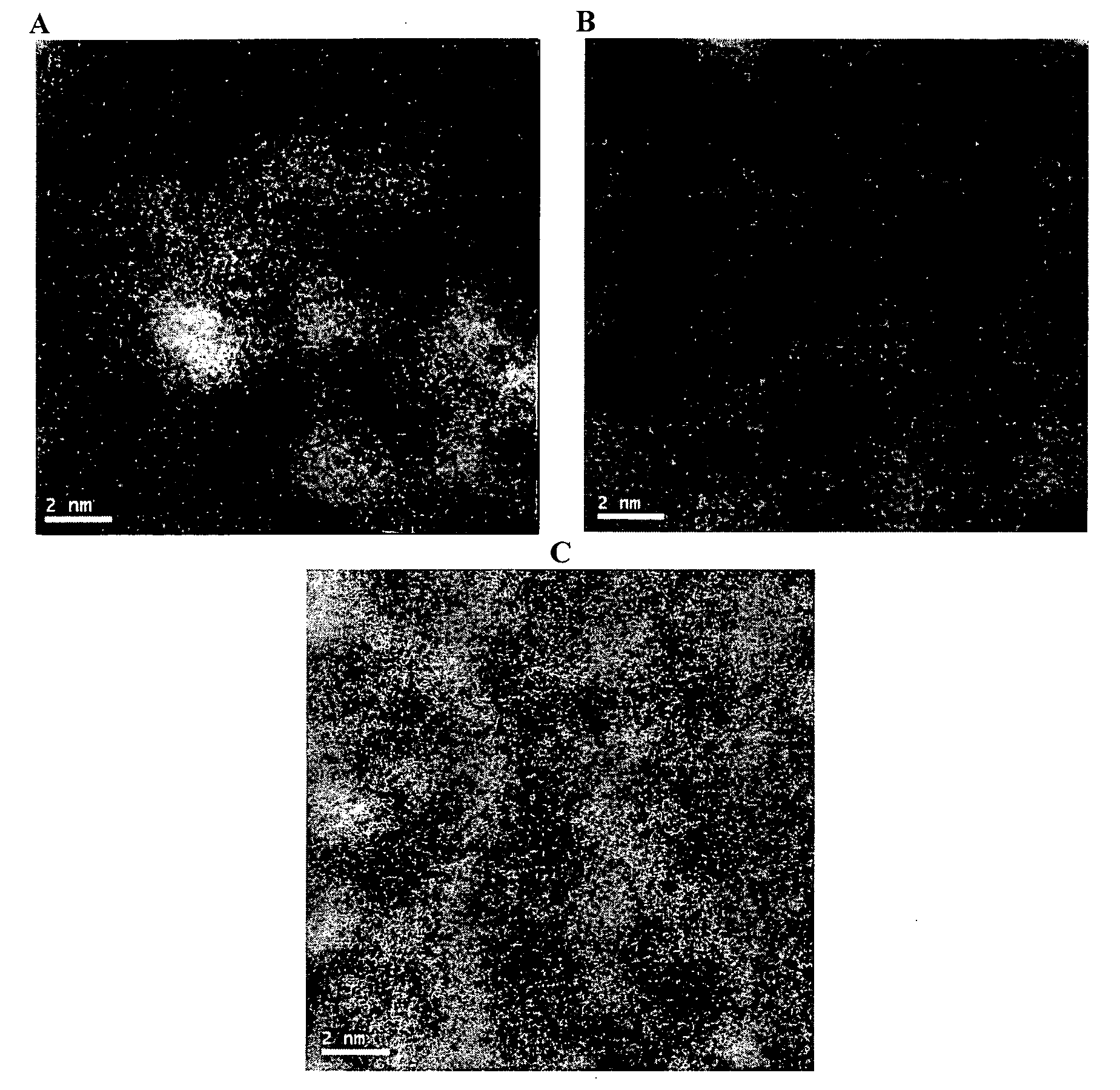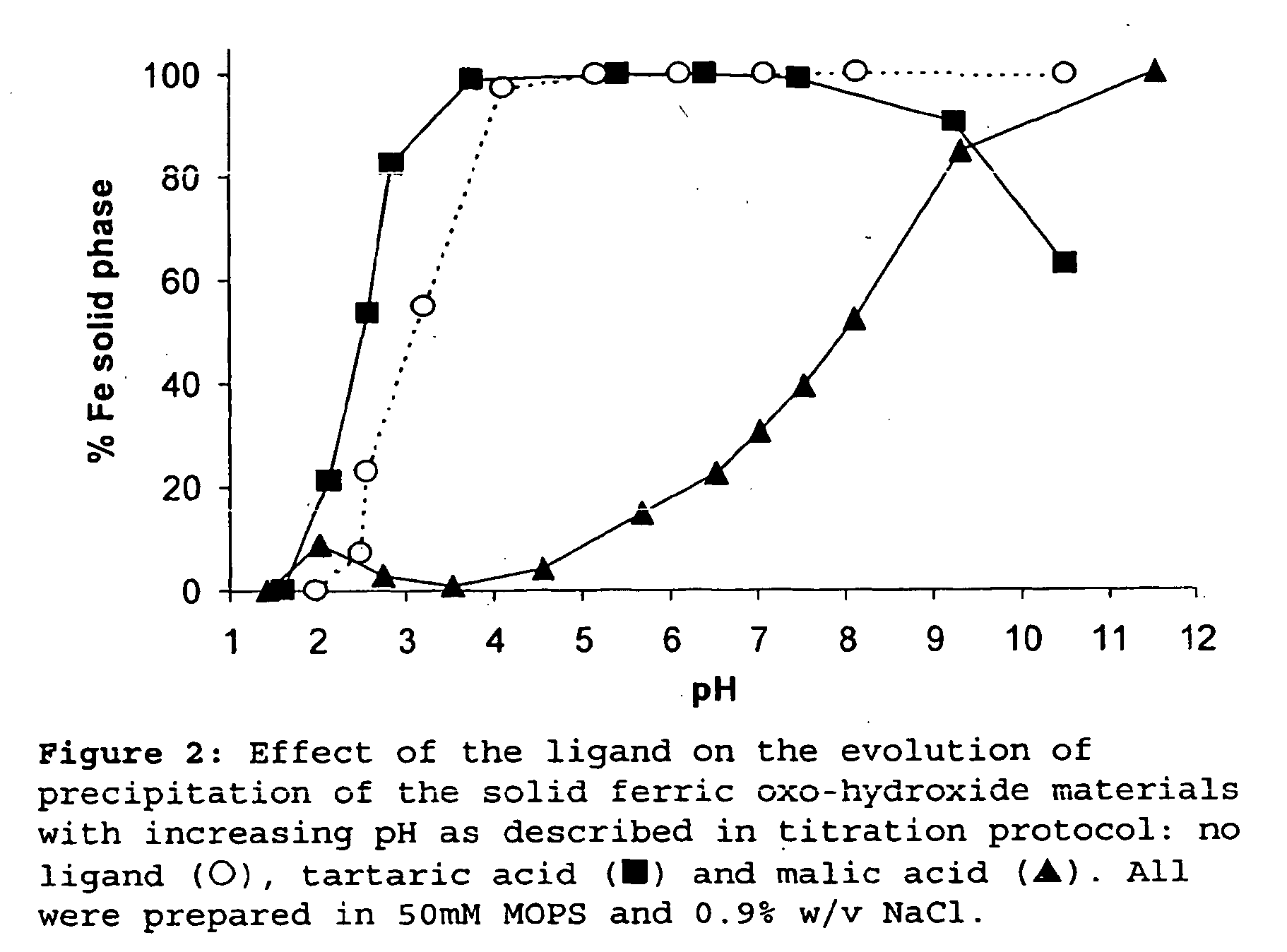Ligand modified poly oxo-hydroxy metal ion materials, their uses and processes for their preparation
a technology of oxo-hydroxy metal ions and ligands, which is applied in the field of ligand-modified poly oxo-hydroxy metal ions, can solve the problems that precipitation cannot easily predict the properties of solids, and achieve the effect of reducing undesirable effects and being highly amenabl
- Summary
- Abstract
- Description
- Claims
- Application Information
AI Technical Summary
Benefits of technology
Problems solved by technology
Method used
Image
Examples
Embodiment Construction
[0051]The solid ligand-modified poly oxo-hydroxy metal ion materials may be represented by the formula (MxLy(OH)n), where M represents one or more metal ions. Normally, the metal ion will originally be present in the form of a salt that in the preparation of the materials may be dissolved and then induced to form polyhydroxy co-complexes with ligand (L) which is generally integrated into the solid phase through formal M-L bonding, i.e. not all of the ligand (L) is simply trapped or adsorbed in the bulk material. The bonding of the metal ion in the materials can be determined using physical analytical techniques such as infrared spectroscopy where the spectra will have peaks characteristic of the bonds between the metal ion and the ligand (L), as well as peaks characteristic of other bonds present in the material such as M-O, O—H and bonds in the ligand species (L). Preferred metal ions (M) are biologically compatible under the conditions for which the material are u...
PUM
| Property | Measurement | Unit |
|---|---|---|
| pH | aaaaa | aaaaa |
| temperature | aaaaa | aaaaa |
| temperature | aaaaa | aaaaa |
Abstract
Description
Claims
Application Information
 Login to View More
Login to View More - R&D
- Intellectual Property
- Life Sciences
- Materials
- Tech Scout
- Unparalleled Data Quality
- Higher Quality Content
- 60% Fewer Hallucinations
Browse by: Latest US Patents, China's latest patents, Technical Efficacy Thesaurus, Application Domain, Technology Topic, Popular Technical Reports.
© 2025 PatSnap. All rights reserved.Legal|Privacy policy|Modern Slavery Act Transparency Statement|Sitemap|About US| Contact US: help@patsnap.com



